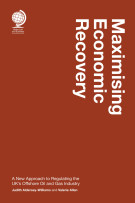Better carrots for partner compensation strategies
30 September 2016

Author bio coming soon
In our latest blog, Norman Clark, founder of Walker Clark LLC and contributor to the new book, Partner Remuneration in Law Firms, discusses the best approach to motivating your partners’ financial performance.
Looking for a Better Carrot
Compensation is a traditional “carrot” in the “carrot and stick” approach that many law firms use to motivate their partners’ financial performance. Increasingly, law firms are discovering that an “eat what you kill” (EWYK) compensation plan, in which a partner’s remuneration is determined entirely or predominantly one’s own fee production, is no more motivating than a cup of espresso coffee. It creates a buzz that lasts a little while and then quickly wears off.
This is why traditional “carrot and stick” thinking about partner compensation seldom produces long-term results in law firms. Some partners are not especially attracted by the taste of the carrot, and most of them learned long ago not to fear the stick.
“Eat what you kill” is not all bad
“Eat what you kill” compensation systems do have some good points. For example:
- A partner who prefers not to work hard pays a hard price in the form of lower compensation, at least for as long as the others are willing to permit that partner to be a drag on the firm’s performance.
- Because EWYK focuses on fee production, it has a direct positive impact on the management of working capital. Partners know that they won’t get paid until the clients pay.
- Most EWYK systems implicitly reinforce the importance of marketing and business development. There is not much opportunity for a “service partner,” who relies primarily on other partners to provide one’s work, to get rich. The easiest way, and usually the only way, that a partner can earn substantially more money is to originate substantially more work.
Bad table manners and indigestion
“Eat what you kill” can weaken, rather than nourish, a partnership, especially when there is not enough of the “kill” left over to invest in sustainable long-term growth of the firm. While stimulating short-term effort, EWYK can produce long-range financial “indigestion,” especially in small and mid-size law firms. In my 20 years’ experience advising law firms on partner remuneration and performance, I have observed four unintended effects of EWYK systems that, unless managed carefully, can wipe out the beneficial aspects of EWYK and, in some cases, actually weaken the firm’s financial performance, rather than improve it.
- Law firms that rely on EWYK systems frequently do not survive the retirement of the founding partners. Because EWYK encourages strong client identification with one particular partner – the one who does most of the work and earns the lion’s share of the fees – the best clients often follow the most productive partners out the door.
- EWYK might drive individual performance, but it seldom supports the development of competitive brand identity for the firm. In EWYK partnerships, one is more likely to hear partners talk about “my client,” rather than “our client.”
- There is a strong correlation between the presence of practice “silos” and hoarding of work by partners and an EWYK system. Although the system might promote hard work by individual partners, it actually can retard the overall financial performance of the firm.
- There is a very high correlation between EWYK compensation and weak or non-existent cross-marketing or cross-practice staffing of engagements.
How to reward performance without jeopardizing the firm
One alternative is simply not to make individual financial performance an element of a partner’s compensation. Some law firm partnerships really do believe that “a rising tide lifts all ships,” at least for them. These partnerships recognize the value of long-term, often intangible, contributions by partners to the overall value of the firm. Therefore, they can function very well with status-based structures, in which seniority or equity determines one’s compensation, or the profits are distributed equally among all partners or all partners within a class. When a partner fails to meet expectations, these firms investigate the problem and find solutions promptly.
Although status-based systems still are attractive to some lawyers, most law firm partnerships today believe that they need at least some tangible recognition of individual financial performance. As a result, I have observed a migration, subtle in some instances, from status-based systems, such as lockstep or equal distribution, to hybrid systems that include both status and performance and, the partners hope, the most important benefits of each one. (At the same time, I have observed a smaller migration in the other direction, from purely performance-based systems to ones with a stronger lockstep or status-based component).
Two examples of these “hybrid” compensation systems are:
- performance-driven modified lockstep: Partner compensation is determined by each person’s position on a lockstep-like “ladder,” which may reflect, to some extent, relative seniority or ownership interest. However, significant movement up the ladder, to larger shares of the profits, is achieved only by performance. Some firms use this structure for non-equity partners and associates as well, with the accumulation of points over the years determining a lawyer’s eligibility for promotion to equity partner or non-equity partner, respectively.
- “salary plus”: In “salary plus” systems, partners receive a stated salary, usually paid monthly. At the end of the year, any undistributed profits are allocated to each equity partner according to one’s performance. Each partner’s share can be determined by a formula that converts various performance measurements to shares in the year-end profit distribution, or by the extent to which each partner achieves specific, measurable performance goals during the year. Although the specific evaluation metrics vary widely from firm to firm, and, in some cases, even among practice groups within the same firm, the three most common subjects for performance goals are fee production (either by the individual partner or by that partner’s book of business), origination, and the profitability of the partner’s practice.
The universal truth about partner compensation…
…is that there is no universal truth. Any partner compensation system can succeed brilliantly or fail miserably. It can make a law firm stronger or break it apart. It all depends on the unique set of objectives, expectations, and values that describe each partnership.
Performance-based compensation is possible without falling prey to the “bad table manners” of an “eat what you kill” system. This is not to say that EWYK has no place in partner compensation in some law firms. To some extent, all law firm partners are dependent on each year’s “hunting,” even in a purely status-based system. Moreover, even with its many risks, an EWYK works very well for some types of law firms.
Whether a particular compensation system – status-based, EWYK, or something in-between –is best for any particular law firm is the result of three practical, uniquely firm-specific, considerations:
- Does the partner compensation system meet the business needs of the firm?
- Does the partner compensation system provide incentives and rewards for partner behaviours that directly support the delivery of the firm’s business plan?
- Is it fair?
Without the first two elements, there won’t be a law firm. Without the last one, there won’t be any partners.
Click here for further details and a free sample chapter of our new title: Partner Remuneration in Law Firm, A Guide to Reward Structures, Performance Management and Decision-Making













Any comments - send us an email